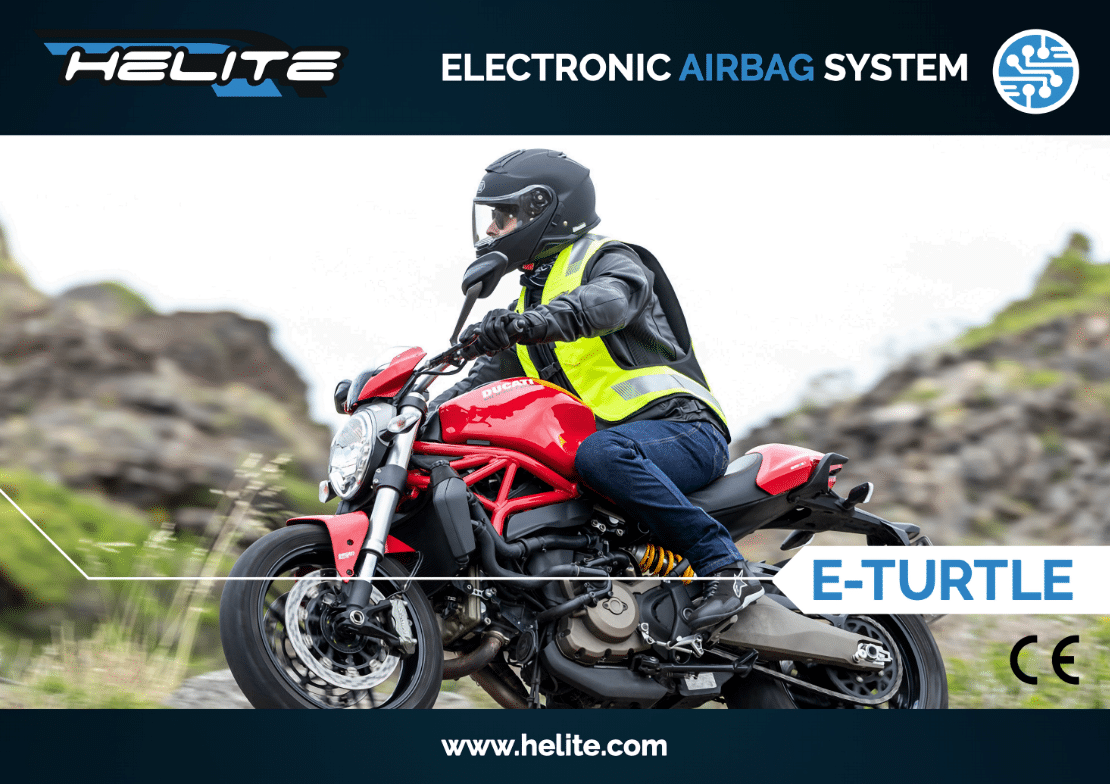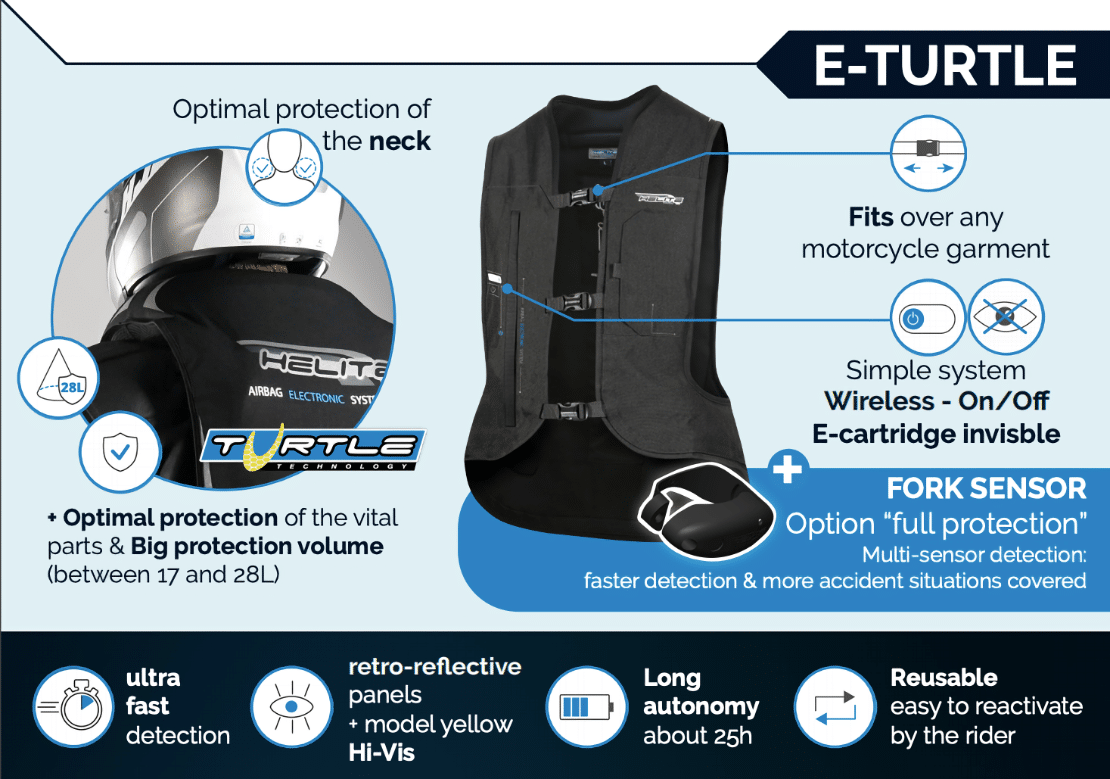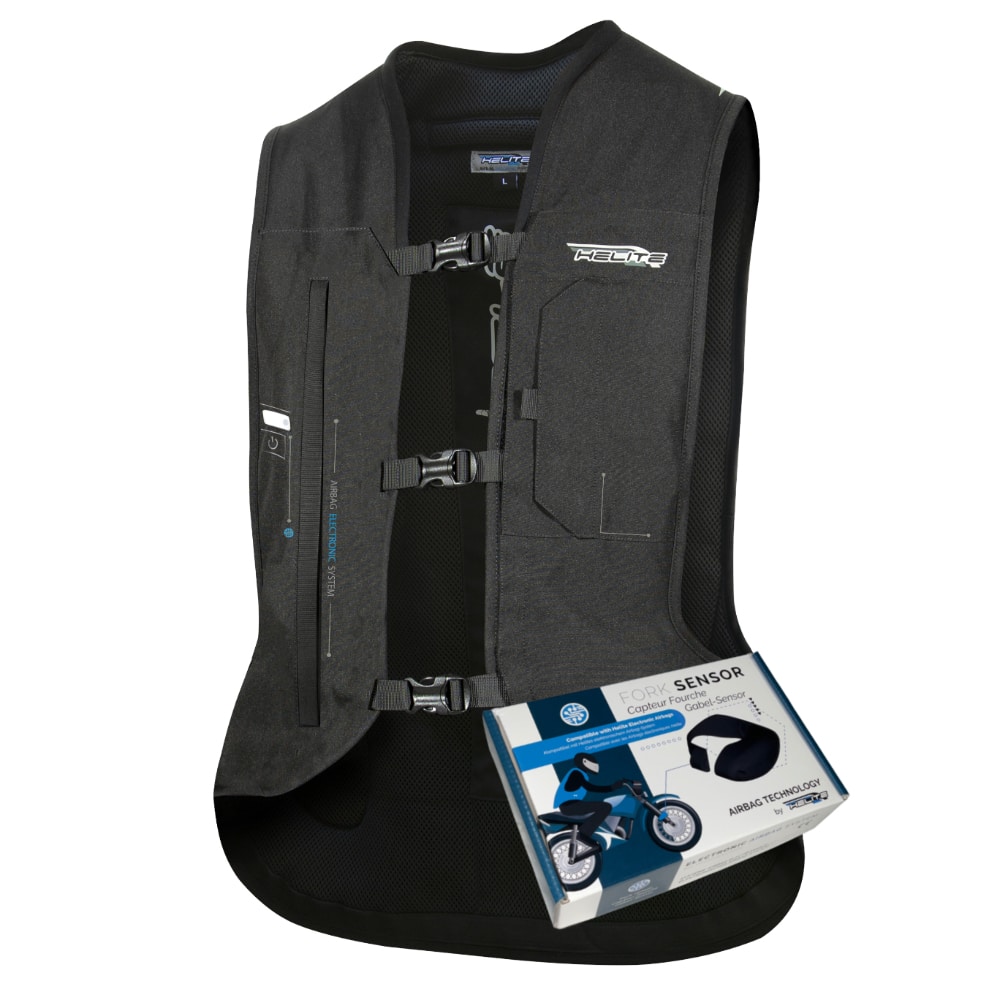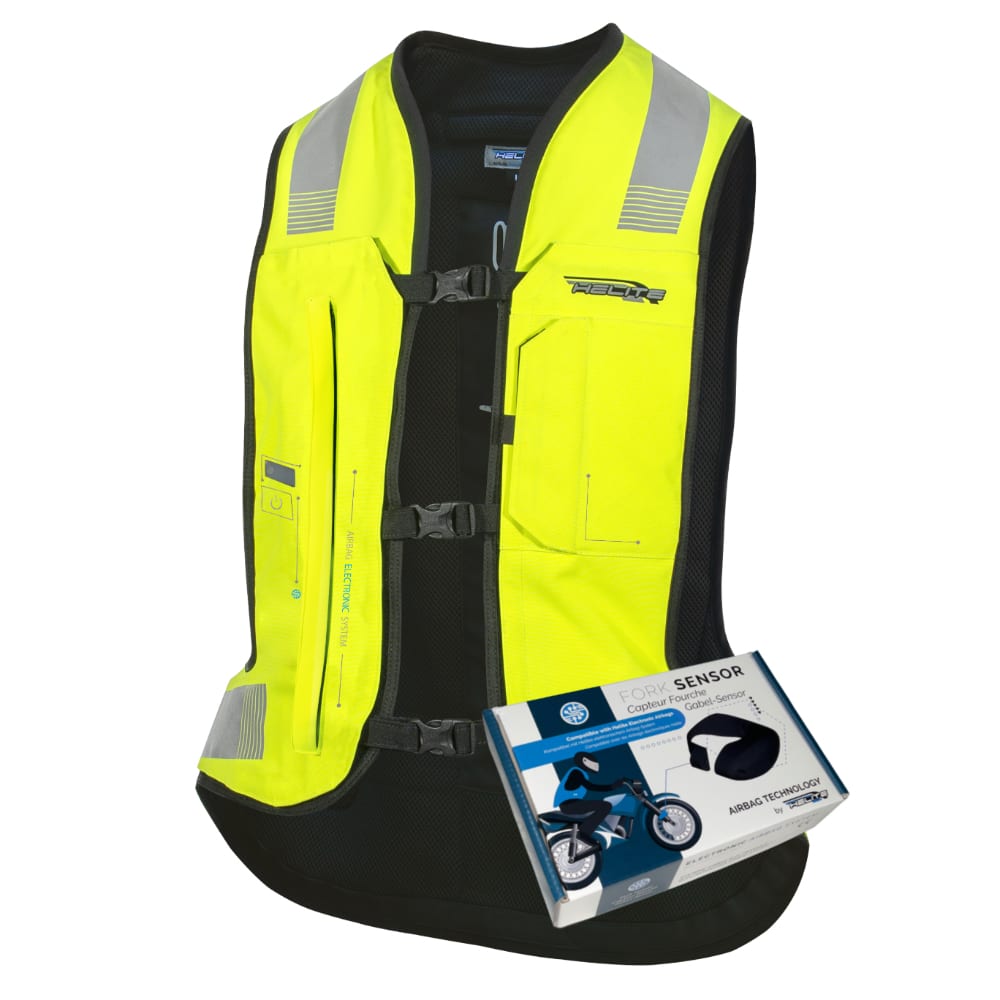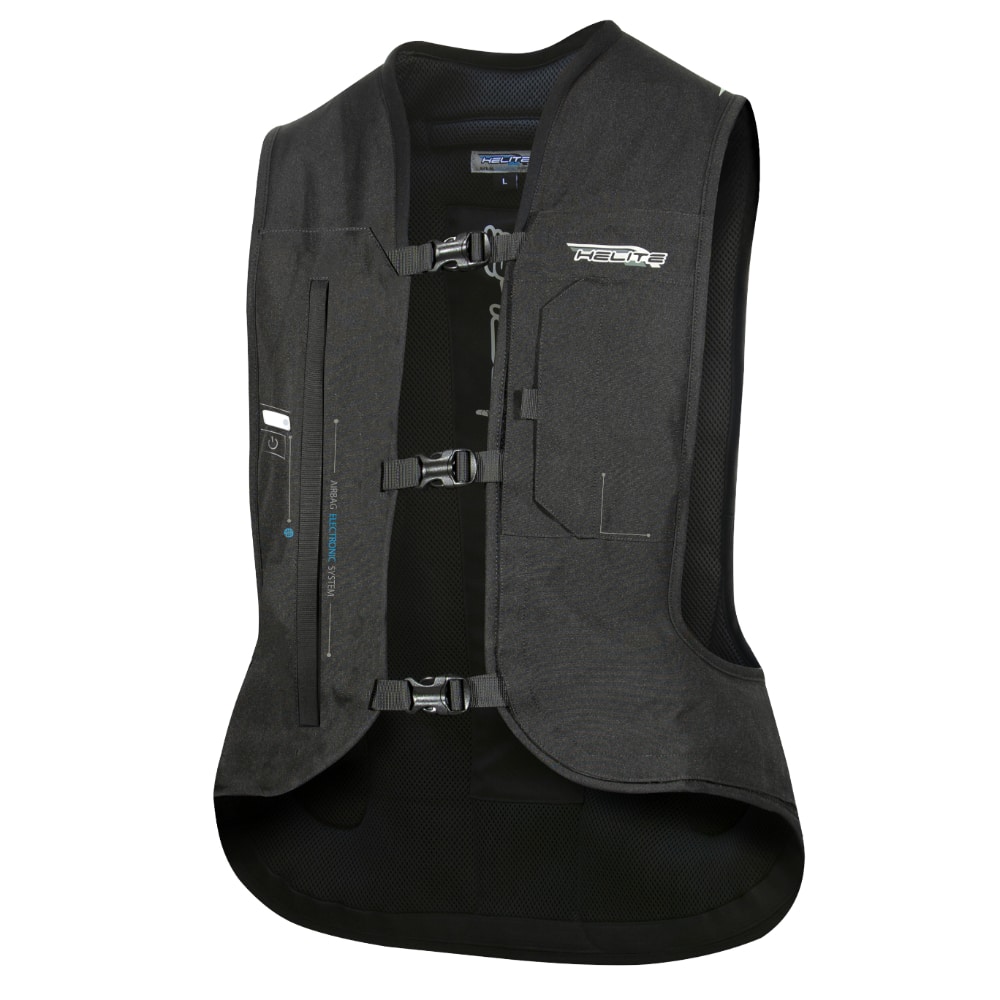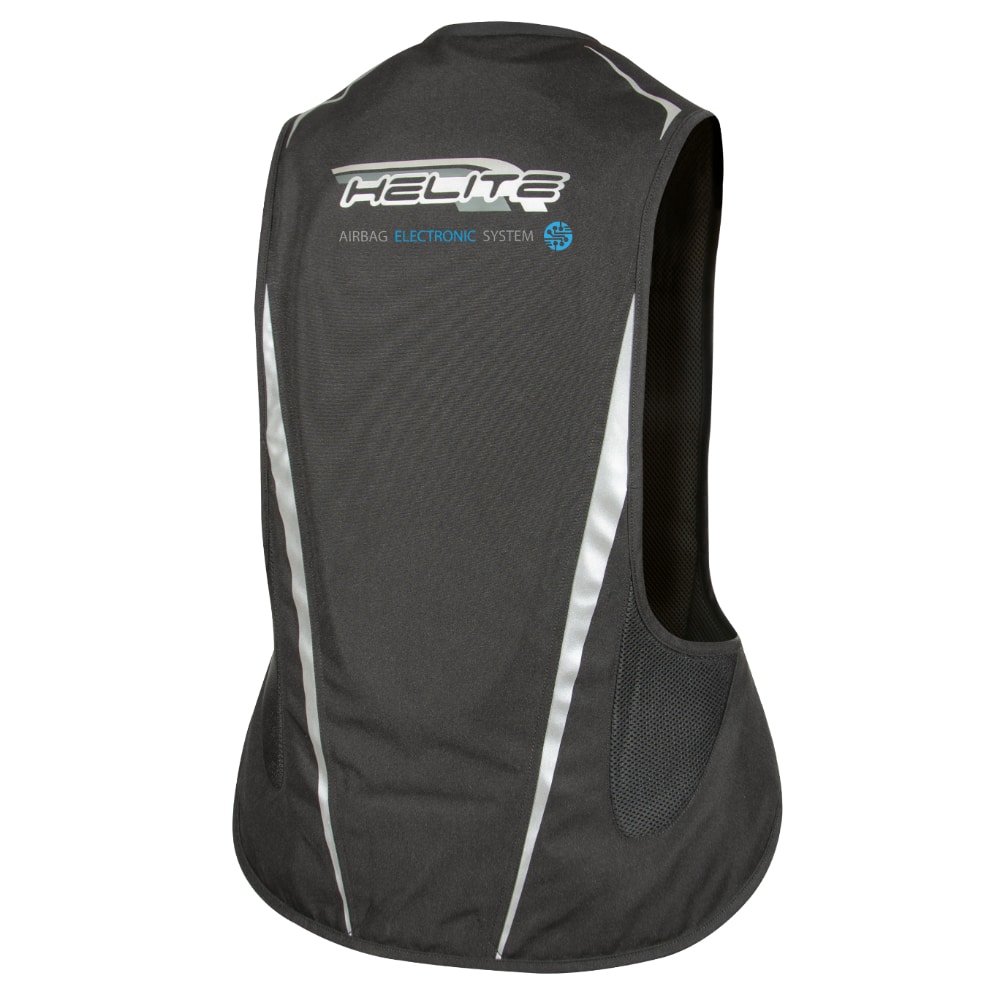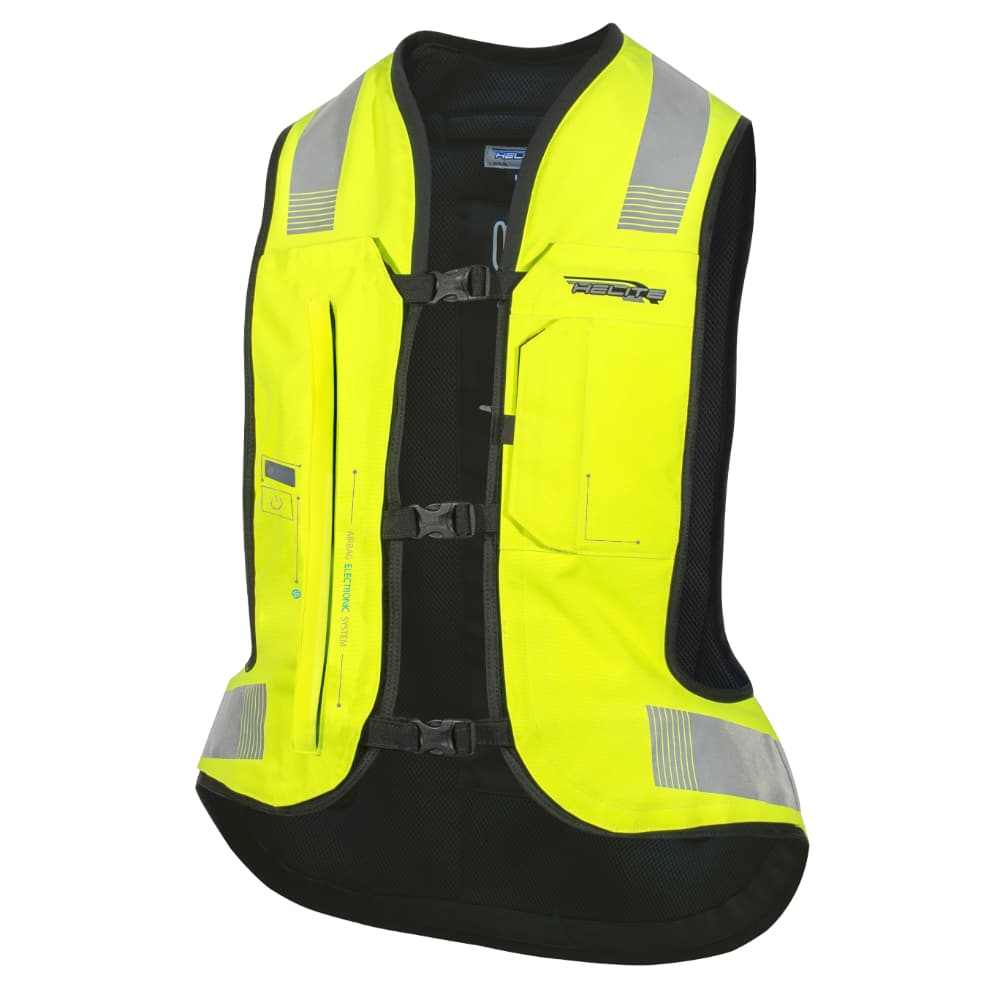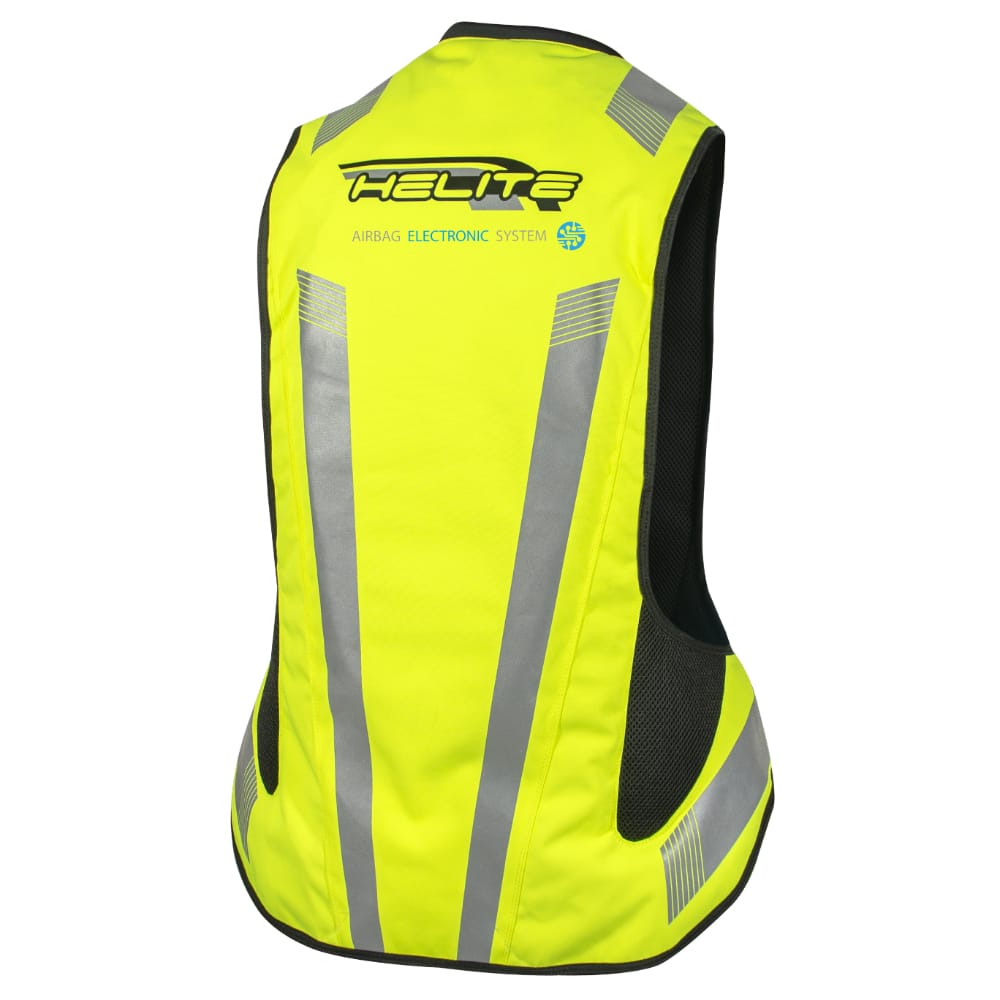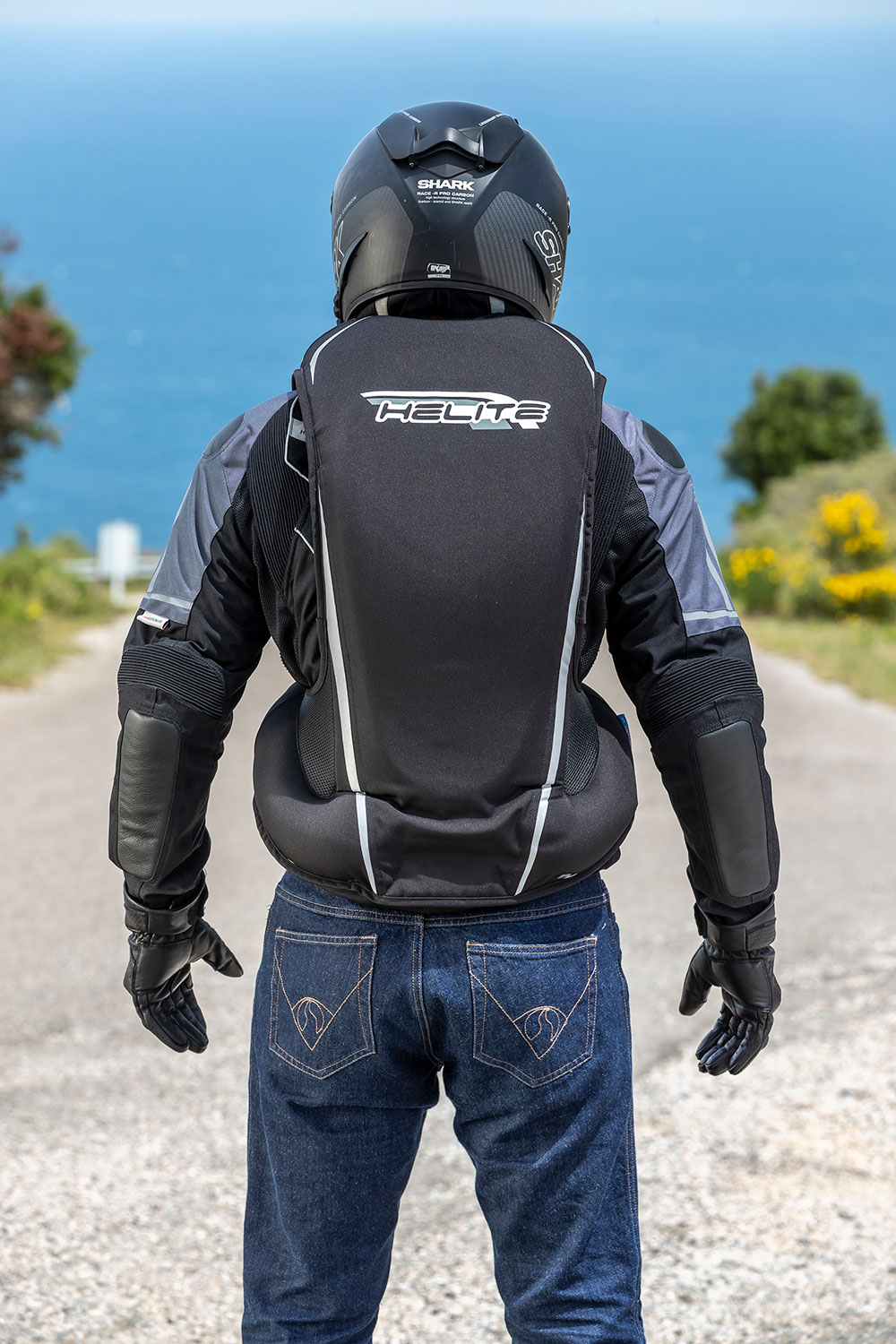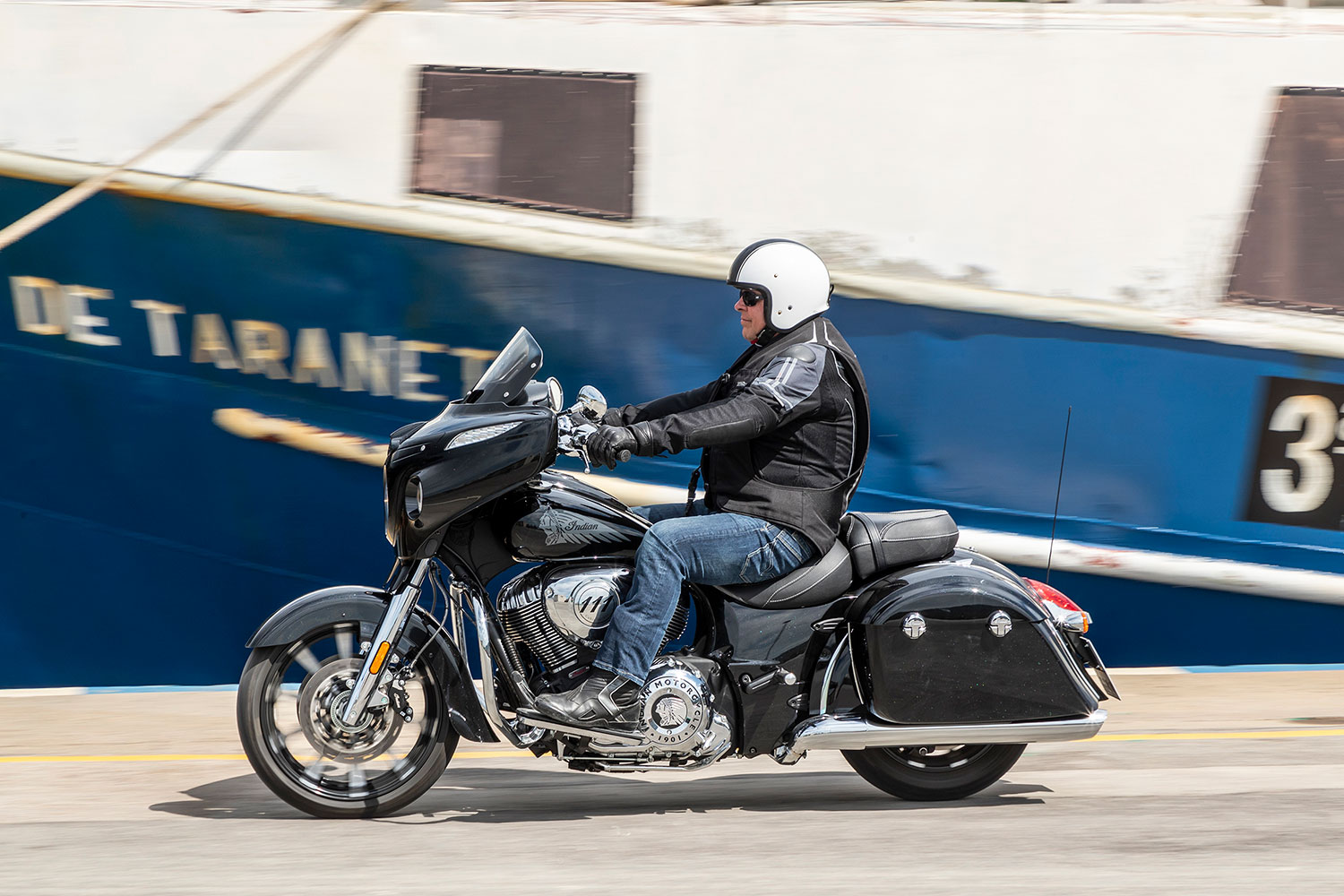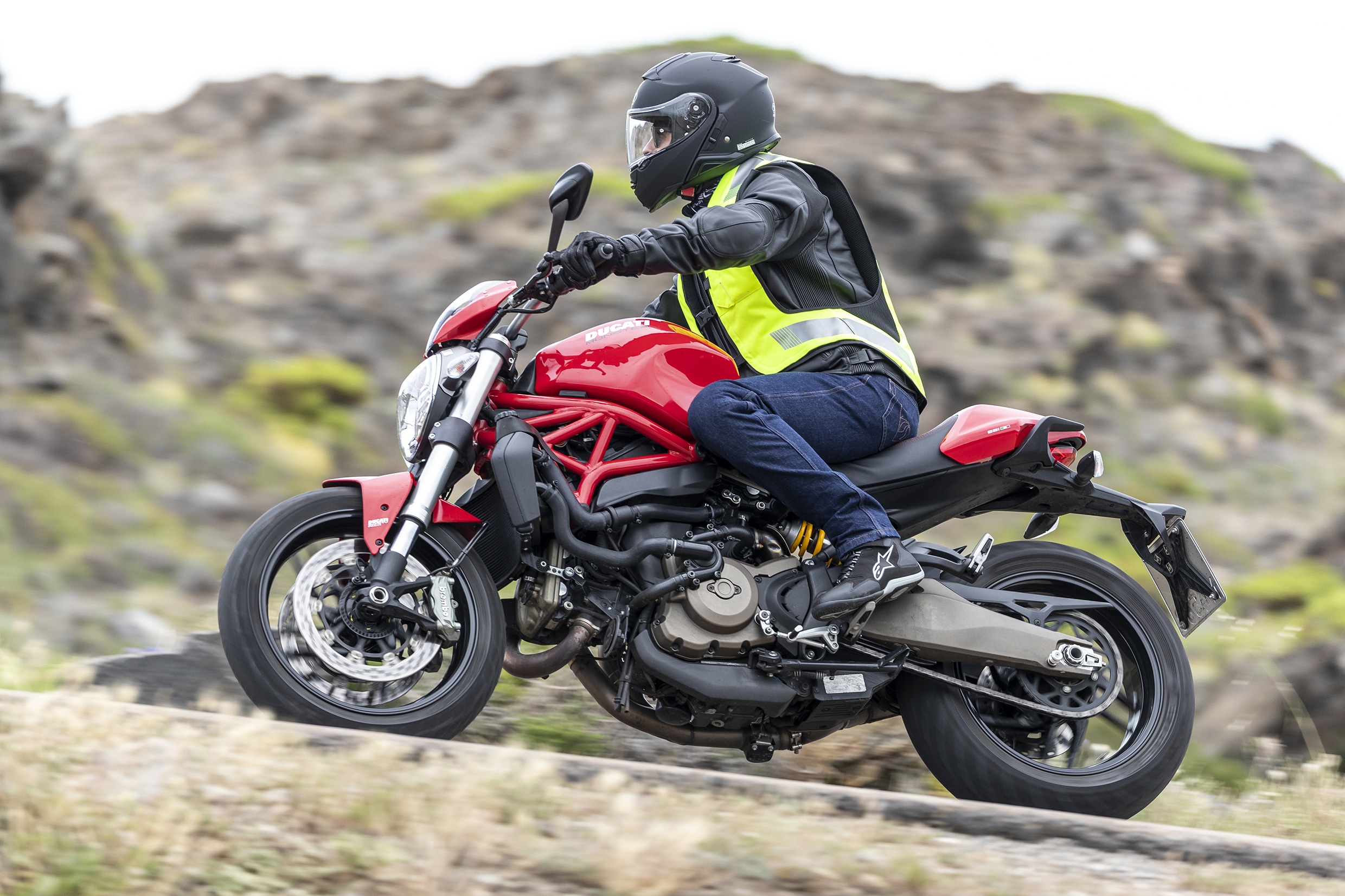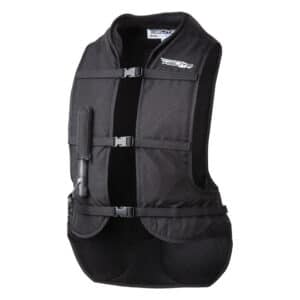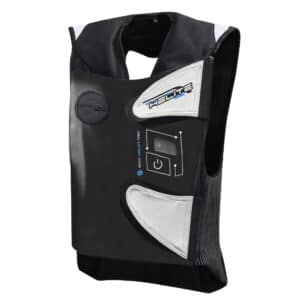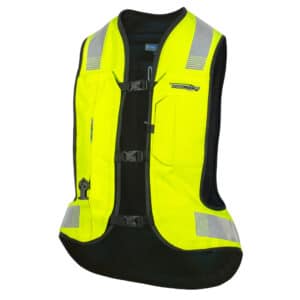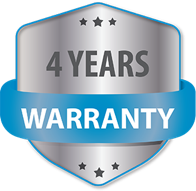KEY FEATURES
- CE certified airbag which is fully inflated in less than 0.08 seconds
- SASTEC 1621 Level 2 back protector placed on the outside of the air bag.
- Battery life: 25 hours (USB charging mechanism).
- Inner textile 3D mesh to maintain good air circulation.
- Vest-style body-worn protective air bag system.
- Adjustable fastenings and Exterior Pocket.
- Comfortable, light & allows a full range of body movement.
- Soft neoprene collar.
- High performance and durable sports fabric.
- Retroreflective strips for maximum visibility on both hi-viz and black colour options.
- Simple and intuitive wireless, electronically activated airbag system.
- Shower proof & suitable for use over any type of garment.
- Composition: 100% polyester vest, 100% polyurethane airbag.
- Range of sizes available:
- XS, S, M, L, XL (e-60cc compatible)
- LL, XLL (e-100cc compatible)
PROTECTION
FORK SENSOR ‘FULL PROTECTION’
For complete protection it is highly recommended to add the optional fork sensor on to the motorcycle.
THE ADVANTAGES:
More accidents covered: protection at standstill (0 mph) and at lower speeds at any angle. Greatly reducing injury.
Faster detection at first impact or slip: The fork sensor reduces detection times from 0.08s to just 0.03s at 35 km/h.
Save Money: Save £25 when purchasing the vest and fork sensor together from this page.
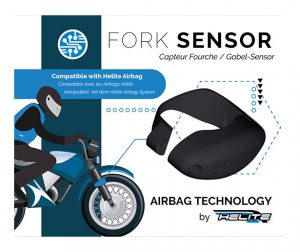
ELECTRONIC AIRBAG SYSTEM TECHNOLOGY
The technology includes several on-board sensors that analyze the situation in real time and allow 360° detection.
When a fall or accident is detected, the airbag inflates automatically before impact.
The sensor integrated in the vest (CDU) follows and analyzes the movements of the biker in real time.
The optional fork sensor (SDU) detects impacts on the motorcycle.
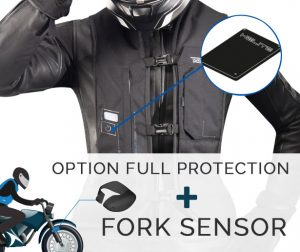
ELECTRONIC TRIGGER SYSTEM
The e-Turtle airbag integrates the “electronic airbag system” by Helite. Easy to use, simply press the button three times to switch the system on or off.
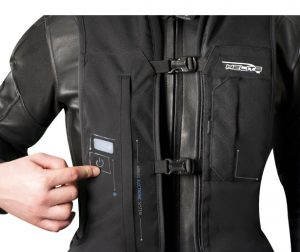
AIRBAG PROTECTION
The airbag integrated into the vest absorbs shocks and stabilizes the body from head to tailbone. It offers optimal protection of the neck and cervical and covers the vital parts (thorax and back).
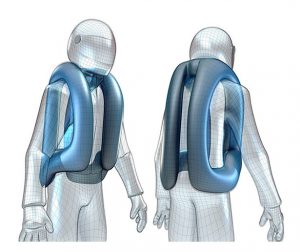
TURTLE TECHNOLOGY
The TURTLE Technology is a breakthrough innovation that significantly improves energy absorption especially of sharp or intruding objects that would otherwise damage the airbag.
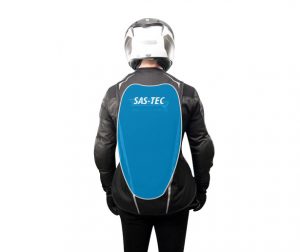
E-CANISTER
The e-canister deploys the airbag in the event of a fall. It is easily and quickly installed and replaced by the rider.
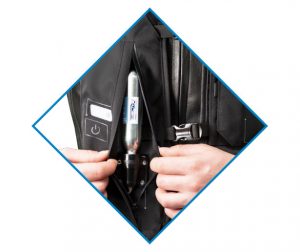
COMFORT
SOFT COLLAR AND TECHNICAL TEXTILE
The vest has a soft neoprene collar for a better comfort around the neck. It is also provided with an interior textile 3D mesh for maximum air circulation.
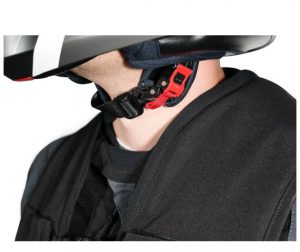
EXTERIOR POCKET
The vest has an exterior pocket for small objects (bank card, cash, highway badge, etc.).
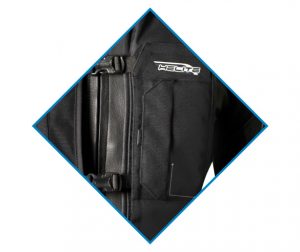
ADJUSTMENT
Three adjustment straps to make the vest fit nicely over any motorcycle gear.
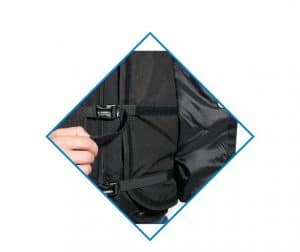
FREEDOM OF MOVEMENT
The vest has a very low cut underarm to keep a full freedom of movement.
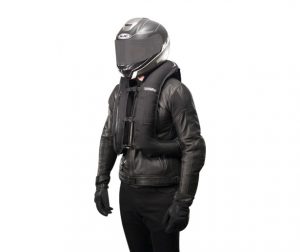
Size Charts
Every person’s size and shape are different. Our size charts are presented for information only. We recommend that you do not wear an airbag if you weigh less than 35 kg.
- The e-Turtle Air Vest is available in 7 sizes: From XS to XL-L.
- The e-Turtle Air Vest is designed to be worn over your normal clothing or usual motorcycle or equestrian equipment e.g. jackets, body armour etc.
- Please remember to take this into account when taking measurements.
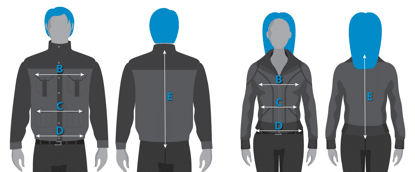
| Sizes(cm) | XS | S | M | L | XL | L-L | XL-L | How to measure? |
|---|---|---|---|---|---|---|---|---|
| Height | 145-165 | 155-170 | 165-175 | 170-185 | 180-195 | 170-185 | 180-195 | A. Measure from the floor to the top of your head. |
| Chest Line | 60-85 | 85-95 | 85-100 | 90-105 | 95-110 | 100-115 | 105-130 | B. Measure horizontally around the fullest part of your chest, under the armpits with your motorcycle gear on. |
| Waist Line | 60-75 | 70-80 | 75-85 | 80-90 | 85-95 | 90-115 | 100-125 | C. Measure horizontally around your abdominal, at its deepest body point with your motorcycle gear on. |
| Hip Line | 65-80 | 80-95 | 85-100 | 90-105 | 95-110 | 100-115 | 105-130 | D. Measure the circumference, from pelvic bone to pelvic bone, at the widest part of your hips. |
| Back Length | 30-45 | 45-55 | 50-60 | 55-65 | 60-70 | 55-70 | 60-75 | E. While standing upright, measure the distance between the lower neck and the tailbone. |
| Canister | 60cc | 60cc | 60cc | 60cc | 60cc | 100cc | 100cc | The canister size must fit the airbag size. |
Frequently Asked Questions
It is important to choose the right size of your airbag for optimal protection. For this, we advise you follow our size chart. Hint: measuring your back is important and a good indication to finding the right size. Please note that this Airbag Safety Vest should always be worn over your normal riding gear. You should therefore only take your measurements whilst wearing your equipment.
All replacement canisters can be purchased from our canisters section found in the main menu.
Perhaps you have lost your fork sensor pairing device or charging cable. It happens from time to time. These can be purchased from our Motorcycle Components section found in the main menu.
Yes, as long as the airbag is in good condition with no holes or tears. It’s easy to do, you can reset the system in under 2 minutes, without sending your airbag system back to us. You simply need to replace the CO2 canister with a new one, available in our canisters section. Please read the manual and see the videos section on this page, showing how this is done.
A typical charge takes around 3 hours but can vary due to battery level, temperature and age. During charge, the vest is not operational. The lights on the vest will determine if the battery is healthy, low (needs charging), or has an issue (needs replacing).
Each charge will last approximately 25 hours. It is worth checking the battery level before each use.
If you own several bikes, you can pair each vest with up to 5 fork sensors. Fork sensors can also be bought separately form our Motorcycle Components section situated in the main menu.
Yes. If you are carrying a pillion passenger, or many people use the same bike, then you can pair as many vests to the fork sensor as you like. It is worth noting that any airbag systems that are in the vicinity of the fork sensor whilst being paired to the sensor and switched on will be triggered in the event of an accident. Please read the manual carefully.
No. The fork sensor lasts for approximately 5 years. At this point a replacement will need to be purchased. Always check that you are pair to the sensor before use.
Yes and No. The motorcycle safety vest will work on its own if you are involved in an accident but only after reaching a speed of 22mph. The fork sensor will give collision detection, even when stationary.
No, once it is used you will need a replacement. All replacement canisters can be purchased from our canisters section found in the main menu.
All our airbag safety vest systems come with a 2 year warranty. You can extend this if you register the product within 3 months of purchase and have it serviced by us at the end of the first two years. This will give you an additional two years of warranty.
- Bus, train, car:
No constraint. For electronic models, remember to turn off the vest when you take this type of transport with your vest.
- Plane :
You may encounter some difficulties with the security services regarding the CO2 canisters used to inflate the airbag. According to the regulations (IATA Regulations – see download), you are authorised to fly with 2 gas canisters (the volume must be less than 200cc), in the cabin or in the hold. Even if the regulations allow it, it is possible that the security service or the airline refuses to let you board with it. We strongly recommend that you print the “IATA Regulations” and show this document to the security service or the airline during the control if they ask for more explanations. In any case, it is the airport security service and the airline that will make the final decision whether or not to accept the airbag on board.
Often each airline will have their own advice pages online, it is worth printing these out also as supplementary documentation.
